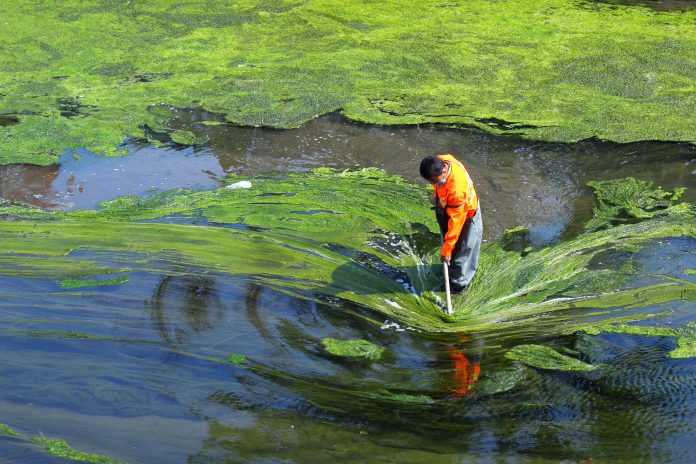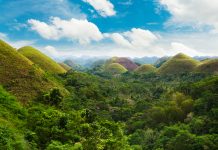Here, we learn about the many uses of spirulina algae, and how BBI JU funded project SpiralG is assessing the sustainability and profitability of each spirulina biomass component
SpiralG is the very first European demonstrator level project funded by BBI-JU (H2020) with the aim to exploit each component of the spirulina algae biomass starting off with the extraction of a blue pigment: phycocyanin. After three years of progress, the SpiralG Consortium has proven the production of 10 tons of dry biomass per year and 10% average content of phycocyanin. A first antioxidant bioactivity with potential applications in the animal health sector has been discovered in the residual fraction (after phycocyanin extraction). Pilot trials and other bio-activity tests are now undergoing to investigate the extent of other potentially profitable markets.
What is Algae?
Algae are generally described as aquatic plants, able to grow in marine or terrestrial environments under two types of forms, either microscopic (micro-algae) or macroscopic (macro-algae or namely seaweed). Algae photosynthesis converts atmospheric carbon into oxygen, thereby providing 50% of the oxygen that we breathe. Moreover, algae biomass represents the very first link of extensive food chains supporting fisheries and global aquatic ecosystems. Therefore, algae play an essential role in the functioning of our environment and the equilibrium of our surrounding resources. More than 70,000 different algae species have been reported worldwide (EABA 2019) but only 50 species are currently produced and used in commercial applications as recently defined in the first European standard for algae and algae products “EN 17399:2020 – Algae and algae products: Terms and definitions” by the European Committee for Standardisation (CEN/TC).
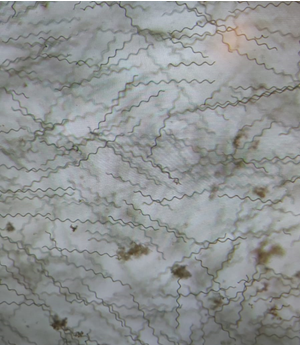
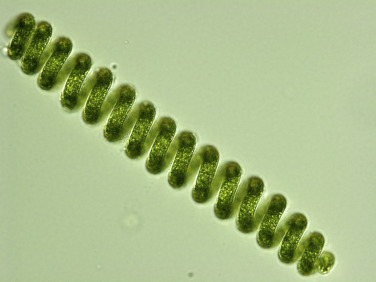
Within the micro-algae species, Arthrospira, known as spirulina, is currently the most cultivated microalga in the world. Spirulina is taxonomically defined as a Cyanobacteria, or blue-green algae, notably due to its high content in blue pigments called phycocyanin. Spirulina was consumed for centuries in Africa and Central America for its’ recognised high protein value and is now extensively produced as food supplements and for other specific applications (cosmetic, medical…). Between 25,000- and 35,000- tons of dry weight spirulina is produced per year throughout the world, with 80% of the market volume covering North America, China and India, whilst Europe only shares between 10 and 15% of the global market. The price of spirulina varies between 5 and $25 kg dry matter depending on the production region (Meticulous market report Spirulina 2019-2025) but can increase up to 100$ kg dry matter for small volumes of organic labelled biomass.
Phycocyanin: A natural alternative to synthetic food dyes
Besides the high protein content, spirulina is also recognised for its consistent Phycocyanin level. Phycocyanin is a light-harvesting blue pigment (protein) involved in the photosynthesis and the concentration can reach a theoretical maximum of 20% of the entire biomass. Phycocyanin, as a water-based spirulina extract, was approved by the FDA in the USA (2019) but also in the EU, Japan and South Korea, as a food-safe blue dye. This regulatory leverage has boosted the production of spirulina and phycocyanin worldwide. Indeed, more than 200 tons of dry phycocyanin is now produced per year and this figure is constantly growing (it has doubled in the last 10 years).
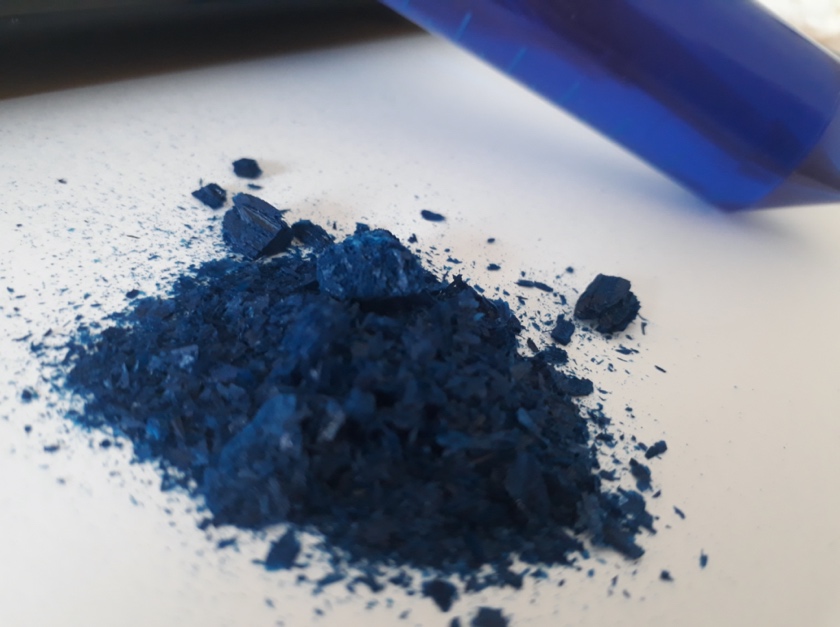
Photo provided by M. Ras (BSCM).
The applications of phycocyanin depend on the level of purity of the extract. Four different grades have been determined, from low purity for food applications up to very high purity for analytical applications. Food grade phycocyanin accounts for most of the phycocyanin production with the target to replace synthetic blues dyes in the food industry (mainly sweets, chocolate coverages, beverages etc.) Synthetic dyes used in the food industry have reduced from more than a 100 (1900s) to only seven on todays’ market, and this is due to numerous health disorders related to its’ consumption (Attention Deficit Orders, Cancer). The reluctance to consume synthetic dyes has increased the demand for the phycocyanin products, and other potential drivers (demand for natural products, bioactivities, nutritional value…) will probably steepen the curve in the near future.
SPIRALG project: Paving the way for a profitable industry
In this context of growth, the EU has chosen to invest in the very first spirulina Biorefinery project: SPIRALG (2018-2022). The Bio-Based Industry (BBI-JU) entity provides the funding for SpiralG, with €5 million over four years and with the aim to demonstrate the feasibility of a spirulina biorefinery concept in the EU. Indeed, SpiralG project has the aim to produce and valorise each component of the spirulina biomass, starting off with phycocyanin extracts and then residual by-products able to run down a new value chain with applications in plants, e.g., for new sources of Nitrogen, animal health through oxidation or probiotic management for example and human health with a particular focus on cardiovascular applications. Five European partners have joined together in the scope of this innovative project: Milis Energy (Italy), Greensea (France), Algaia (France), MIAL (Germany) and UCD (Ireland).
SpiralG inaugurated the 0.5Ha spirulina production plant in Milis Energy (Sardinia) able to supply a new Phycocyanin extraction line established in Greensea, which is designed to process up to 50 tons of dry biomass per year. Phycocyanin content varies between eight and 15% depending on the season and culture conditions. The residual product obtained after phycocyanin extraction is then investigated in terms of bio-actives for the plant, animal and human health sectors (Algaia and MIAL). A first antioxidant hit has recently been revealed by Algaia with possible applications in the animal health sector. Pilot-scale trials are undergoing with the aim to confirm this outcome and produce larger volumes for other potential applications. Finally, the Life Cycle Assessment (LCA) of the whole demonstrator is analysed by UCD to determine the environmental impacts and suggest alternatives to convert to more sustainable practices. In addition to the zero residue (or waste) which is one main goal, other challenging production aspects have been discovered. Although the production of spirulina biomass only requires water and nutrients (no synthetic chemicals) and the extraction of phycocyanin is solvent-free, other parameters such as heat, water consumption and CO2 supply of spirulina ponds as well as transport, process and preservation of large volumes can account for environmentally and economically impacting parameters.
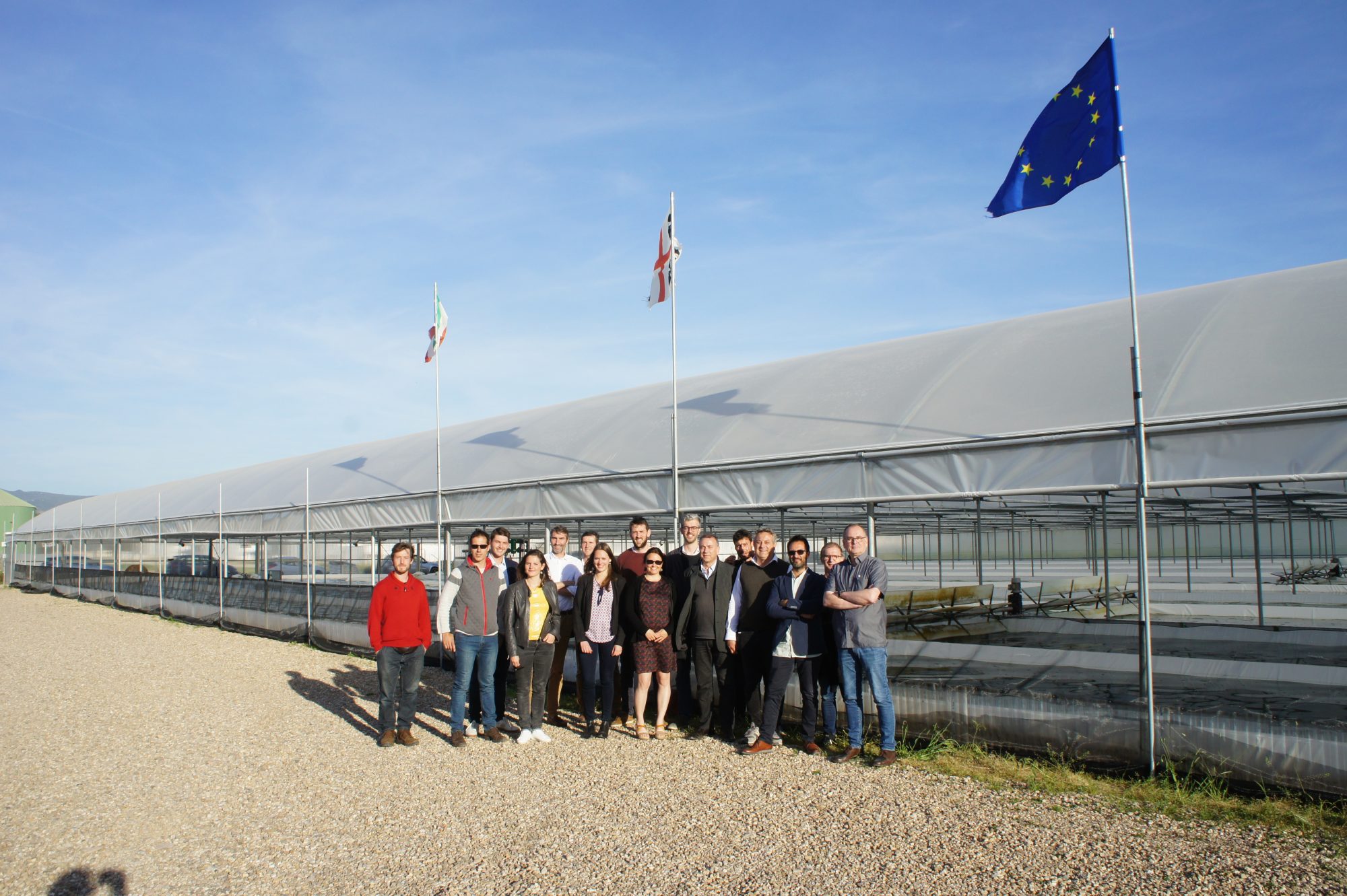
From left to right. Back line: Alexis Jacob and Benoit Queguineur (Algaia), Kevin Mc Donnell and Joseph Swenney (UCD), Davide Pierobon and Matteo Pavan (Milis Energy), Roberto Sandrini. Front line: Guilhem Charandack and Thibaut Michel (Greensea), Maud Benoit (Algaia), Léa Braud (UCD), Monique Ras (BSCM), Jean Paul Cadoret (Greensea), Andrea Moro and Claudio Ledda (Milis Energy), Theodor Fahrendorf (MIAL).
This coming year, SpiralG will wrap up the last pilot-scale trials and bioactivity tests to provide the necessary data for measuring the economic and environmental impacts and for establishing the business plan. The bottom line will hence be to assess the sustainability/profitability of exploiting spirulina biomass according to a biorefinery concept in the EU… the story will soon tell!
Acknowledgments
This project has received funding from the Bio Based Industries Joint Undertaking (JU) under grant agreement No 792257. The JU receives support from the European Union’s Horizon 2020 research and innovation program and the Bio Based Industries Consortium.

This project has received funding from the European Union’s HORIZON 2020 Research programme under the Grant Agreement no. 792257.
*Please note: This is a commercial profile

